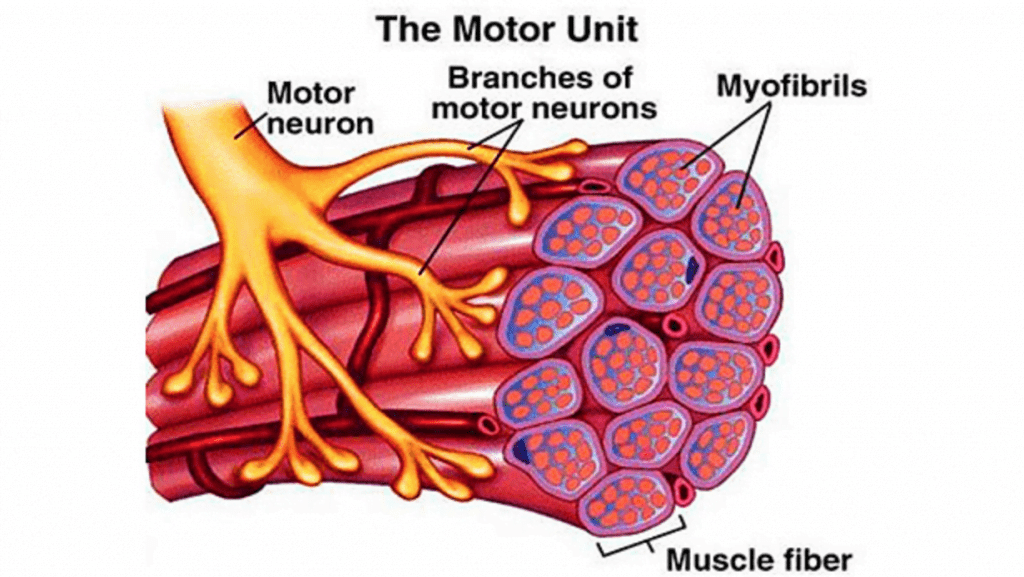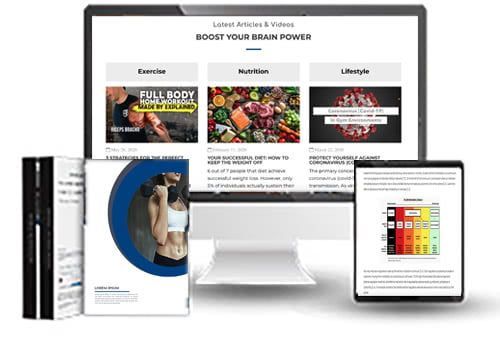
YOUR FITNESS BLOG
Personal Trainer Collective: Evidence-Based Fitness Part I
Introduction
The Personal Trainer Collective Conference – Bath, UK – April 23-24, 2016
The personal trainer collective (PTC) conference held in Bath, England on April 23-24, 2016 was an invaluable opportunity to listen to arguably the worlds leading minds in the area of resistance exercise, nutrition and evidence-based fitness. The speakers included Brad Schoenfeld, Bret Contreras, James Krieger, and Alan Aragon. The conference was held over a 2-day period, where each speaker presented once on each day. This post will introduce two of the four speakers and highlight their subject matter presented with practical application.
Brad Schoenfeld – “The Hypertrophy Specialist”
Brad Schoenfeld is one of the most highly regarded professionals in the field of body composition training, specifically muscle hypertrophy (muscular development). Schoenfeld is presently an assistant professor in the exercises science department at Lehman College in Bronx, NY and serves as their director of their human performance research team. Also, Schoenfeld has written for many popular publications including Shape and Men’s Health in addition being a former natural bodybuilding competitor and personal trainer.
On day 1 of the conference, Schoenfeld discussed loading zones, specifically whether heavy or moderate loading in resistance training is better for gaining muscle or strength. Shoenfeld and colleagues (2014) recently publish a paper investigating the differences in muscular adaptation (hypertrophy and strength) between bodybuilding training that uses a body part split routine versus powerlifting training utilising total body routine [7]. In this paper, 20 trained subjects (minimum of 1-year resistance training experience 3x/week) were randomly allocated to either a bodybuilding training group labelled “hypertrophy training” (HT) or a powerlifting training group labelled “strength training” (ST) [7]. The HT group worked each muscle once per week, with 3 exercises per session and performed 3 sets of 10 repetitions for each exercise with 90-second rest intervals [7]. The ST group trained complete body 3 times per week with 1 exercise per body part, per session performing 7 sets of 3 repetitions [7].
The authors from this study measured hypertrophy using ultrasound and strength using 1-repetition maximum (RM) for the squat and bench press [7]. The results of this study showed that both groups increased biceps thickness (muscle hypertrophy) by approximately 13% with no differences between groups, while both groups increased 1RM strength with the ST group showing greater strength increases in the bench press and squat [7].
This study suggests that for hypertrophy goals, as long volume is equated, both heavy to moderate-heavy weights can be used to generate hypertrophy gains, while using heavier weights appears best for increasing strength. However, Schoenfeld was quick to indicate that using heavier loads, as used in ST group, greatly taxes the neural system and can easily lead to overtraining. In contrast, lighter loads are able to spare the nervous system, which may prove more practical, particularly for a personal trainer that is working with an injury population and working with clients less experienced with resistance exercise .
In the later half of his talk, Schoenfeld transitioned to discuss the application of using low-loads for achieving muscle hypertrophy. Traditional guidelines for resistance exercise indicate that loads of greater or equal to 65% of 1RM are required to generate hypertrophy gains. Maximising muscle growth is dependent on recruiting as many motor units (a motor neuron and the muscle fibre it innervates) as possible in the targeted muscles. These guidelines are based on the theory that heavier weights are needed to fully recruit higher threshold motor units. However, Shoenfeld points to research indicating that substantial hypertrophy can be achieved using lower-loads provided it is carried out to muscular failure.
 The reasoning behind Schoenfeld’s suggestion for using low-loads to elicit hypertrophy is extracted from emerging research indicating a muscle fibre type specific response to training, whereby low-loads can activate type I muscle fibres. There are three primary muscle fibre types in humans – type I, type IIa and type IIb. Type I muscle fibres are deemed slow twitch fibres and are smaller compared to type II, more resistant to fatigue and endurance orientated compared to type II fibres. An endurance activity like a 5000m run would be an example of a sport that would exhibit predominantly type I muscle fibre dominant athletes.
The reasoning behind Schoenfeld’s suggestion for using low-loads to elicit hypertrophy is extracted from emerging research indicating a muscle fibre type specific response to training, whereby low-loads can activate type I muscle fibres. There are three primary muscle fibre types in humans – type I, type IIa and type IIb. Type I muscle fibres are deemed slow twitch fibres and are smaller compared to type II, more resistant to fatigue and endurance orientated compared to type II fibres. An endurance activity like a 5000m run would be an example of a sport that would exhibit predominantly type I muscle fibre dominant athletes.
In contrast, type II muscle fibres, deemed fast-twitch, are larger and more anaerobic, therefore fatigue faster compared to type I fibres. A explosive, power activity like the 100m sprint would be an example of a sport that would exhibit predominantly type II muscle fibre dominant athletes. Schoenfeld notes that both type I and II muscle fibres have the capacity for muscle hypertrophy. It is often claimed that only high intensities can recruit high threshold motor units. However, muscular fatigue has a great role to play in hypertrophy stimulation and motor unit recruitment.
For example, if you were performing a set of dumbbell chest press and using a low-load of 30% of 1RM, your 1RM chest press (the maximum weight lifted for 1 repetition) was 100kg, then 30kg would represent 30% of 1RM. As fatigue increases when performing a set of dumbbell chest press, the increased time-under-tension of the muscles stimulates these smaller, aerobic and more fatigue resistant type I muscle fibres. Also, in reaching a point of muscular failure during the set, low-loads may provide a mechanism to further activate fast-twitch type II muscle fibres, stimulating growth of these muscle fibres as well.
Schoenfeld went on to describe several studies demonstrating greater muscle activation with higher weights (>70% 1RM), however these studies did not necessarily reflect long term muscle adaptation to resistance training.
Practical Application
The commonly held perspective that only heavier weights (65% 1 RM) are required to elicit hypertrophy gains is simply not true as evidenced by the scientific literature. More accurately, a broad range of loads in resistance training (6 to 12 repetitions, 65 to 85% of 1RM) and volumes of 6-12 sets per muscle group, per session can be used to elicit hypertrophy gains.
Low-loads of approximately 30% of 1RM can be effective for stimulating growth of type I muscle fibres and if taken to failure, low-loads may provide a mechanism for stimulating type II muscle fibres. Also, higher loads of >70% of 1RM may be required to activate the highest threshold motor units, further reinforcing the application of varying training loads in resistance training.
It is common for a personal trainer to adhere only to higher repetition ranges (i.e. 10-12, 12-15) to elicit hypertrophy gains. However, varying repetitions and training loads can be a highly effective strategy for accelerating muscular adaptation. One method of changing repetitions and training loads each workouts called daily undulating periodisation (DUP), has been been shown to be particularly effective for enhancing strength and muscle hypertrophy. Periodising or planning the workouts of clients over a longer period (i.e. 3 – 4 months) can also help a personal trainer integrate varying training loads and repetition ranges according to the training goal of his or her clients.
Alan Aragon – “The Nutrition Specialist”
Alan Aragon was another one of the four speakers presenting at the Personal Trainer Collective Conference. Aragon is well respected in the field of evidenced-based fitness and is specifically recognised as a leader in the area of applied nutrition. Aragon holds a Bachelor and Master of Science in Nutrition and maintains a position as continuing education provider for the Commission on Dietetic Registration and National Strength and Conditioning Association. He has authored and co-authored on a number of professionally published journals in addition to acting as a contributing editor to popular publications like Men’s Health Magazine.
On the Saturday, Day 1, Aragon addressed the issue of nutrient timing and the proposed “anabolic window” theory. This theory was first introduced by John Ivy and Robert Portman in 2004 and proposes that muscular adaptations are significantly compromised if key nutrients are not consumed within 45 minutes following exercise [4]. In their book “Nutrient Timing – The Future of Sports Nutrition,” Ivy & Portman explain that immediate, post-exercise co-ingestion of fast-absorbing protein and carbohydrates are critical for optimising muscular recovery and growth via reducing muscle protein breakdown and maximising net muscle protein synthesis [4]. In other words, nutrients from either solid food or supplements must be consumed immediately following exercise to optimise muscle building or strength. This theory was enlarged and popularised by supplement companies for financial gain and still remains a post-workout nutritional prescription for the average personal trainer.
However, there are some important imitations in Ivy & Portman’s guidelines for nutrient timing. Specifically, the authors fail to indicate population specificity or who the guidelines are targeted towards. Also, the authors focus on the acute effects rather than the chronic effects of research to inform their guidelines on nutrient timing. Finally, the authors rely upon research using overnight-fasted subjects put through endurance/depletion protocols, which we will learn is different when compared to the response of non-fasted subjects.
The Origins of the “Anabolic Window”
The Study:
In 1988, Ivy and Colleagues published a research study in the Journal of Applied Physiology that set out to examine the effect of carbohydrate timing on muscle glycogen storage following exercise [3].
Methods:
The authors placed 12 male cyclists on a cycle ergometer for 70 continuous minutes at 68% VO2 max, interjected by six 2-minute cycle sprints at 88% VO2 max, on two separate occasions [3]. The subjects were either given a 25% carbohydrate solution (2g/kg) immediately following exercise or delayed consumption of this solution by 2 hours post-exercise. Blood samples were obtained during exercise and at specific times following exercise [3].
Findings:
During the first 2-hours following exercise, glycogen storage for the group administered carbohydrates immediately post-exercise was 3 times greater (7.7 mumol.g) than the 2-hour delayed group (2.5 mumol.g) [3]. During the second 2-hour time period following exercise, glycogen was still roughly twice as fast in the immediate group compared to delayed group [3]. At the 4-hour mark, the immediate group had 34.7% greater glycogen storage compared to the delayed group [3].
Conclusions:
Delaying the ingestion of a carbohydrate supplement post-exercise will result in a reduction in muscle glycogen storage [3].
The Fallacy of “Spiking” Insulin Levels Post-Exercise
Following a workout, it is proposed that insulin has anti-catabolic effects that reduce the breakdown of muscle protein [1]. A common strategy is for a personal trainer to prescribe high-glycemic (glucose or blood sugar), fast-absorbing proteins/amino acids or carbohydrates immediately following exercise to maximise insulin response and mitigate muscle protein breakdown and accelerate recovery. This is often prescribed by a personal trainer in the form of sugar-rich foods like juice or supplements.
However, this post-exercise nutritional prescription is based on the assumption that exercise is performed under a fasted state (abstinence of food or drink). Under a fasted state, there is compelling evidence indicating muscle protein breakdown is elevated following a workout [1]. Muscle protein breakdown is found to significantly increase 3-hours post exercise, up to 50% in some instances, then can persists further for up to 24-hours post-exercise under these conditions [1].
But, what if exercise is not performed under fasted conditions? The research shows that a pre-workout meal (solid or supplemental) of either protein or mixed (protein, carbohydrate and fat) is more than sufficient to elevate insulin levels during and following a workout [1]. If this is the case, then the addition of insulin immediately post-workout would be redundant for reducing muscle protein breakdown or accelerating recovery.
In support of this argument, there is evidence showing that no greater elevation in net muscle protein balance, which is muscle protein synthesis (gaining) minus protein breakdown (losing), has been found beyond insulin elevation of 15-30 mU/L, which is approximately 3-5 times fasting levels [6]. This means that there is a “ceiling” on insulin intake and anything above these levels will not yield any additional benefit in the context of post-workout recovery. This “ceiling.” otherwise knows as the “muscle full effect” or protein refraction was previously examined in a previous article of ours.
Also, the reality is that insulin elevations of 15-30 mU/L are easily attainable and even surpassed with normal-sized mixed meals. Depending on the size of a meal, it takes approximately 1-2 hours for circulating nutrient levels to peak and another 3-6 hours (or more) for these levels to drop back down to baseline. To demonstrate this metabolic response following a meal, Power and colleagues (2009) examined the effect of protein hydrolysis on the insulin response to the ingestion of whey protein supplement [5]. The authors showed that a 45 g dose of whey protein isolate takes approximately 50 minutes to cause blood amino acids to peak [5]. Insulin levels peaked at 40 minutes following ingestion of protein supplement [5]. Importantly, peaked insulin levels remained at elevated levels known to max-out net muscle protein balance (15-30 mU/L, or 104-2018 pmol/L) for about 2-hours [5]. The inclusion of carbohydrates to this protein dose would cause even greater elevations in peak insulin levels and sustain these levels even longer.
A study by Capaldo and colleagues (1999) measured the metabolic effects of ingesting a solid, mixed meal containing 75 g carbohydrate, 37 g protein, and 17 g fat [2]. The study showed that ingestion of this mixed meal raised insulin levels 3 times above fasting levels within 30 minutes, and 5 times greater than fasting at 60 minutes [2]. At the 5-hour mark, insulin levels still remained double that of fasting [2]. Therefore, recommendations from any personal trainer to spike insulin levels of his or her clients post-exercise to promote muscle recovery and growth fail to stand up against the evidence.
Only in the case of an overnight fast would immediate post-workout ingestion of nutrients be advocated to prevent muscle protein breakdown and enhance protein synthesis [1]. Instead, a personal trainer should focus closely on the pre-workout meal and timing. If increasing strength and lean muscle mass is the objective, effort should made to consume a solid meal 1-2 hours prior to a workout to maximise performance and post-workout response [1]. A meal consisting of a protein drink supplement can be taken immediately prior to a workout as this form is metabolised more rapidly.
When considering nutrient intake following a workout, it is recommended that the duration between pre- and post-workout meals fall between 3 – 4 hours, depending on the size of the pre-workout meal and based on a workout lasting 45 – 90 minutes [1]. For example, if an individual trains at 5pm, a pre-workout meal at 3:30pm and post-workout meal at 7pm would be optimal for enhancing muscle protein synthesis and preventing muscle breakdown.
If a pre-workout meal is larger, which would increase its anti-catabolic effects, it is reasonable to suggest that the time period between pre- and post-workout meals would increase (5 – 6 hours) [1]. If a workout is performed more than 3 – 4 hours from a pre-workout meal, it is advisable that a protein or carbohydrate-protein mixed meal or supplement be taken immediately following the workout to enhance recovery and prevent a catabolic response [1].
Practical Application
Nutrition within and surrounding a workout is typically an area a personal trainer will advise upon for his or her clients. When examining the classical recommendation of a protein supplement drink or sugar food immediately following a workout, this recommendation holds little justification.
Only under a fasted state, or in the event of repeated bouts of intense exercise (i.e. cycling, running or weightlifting multiple times a day), would immediate, post-exercise nutrition be warranted. Instead, it is a better strategy for a personal trainer to focus on pre-workout meal team, advising clients to consume a protein or protein-carbohydrate rich meal within 1-2 hours of initiating training. This time period would allow circulating nutrient levels to peak and remain elevated (depending on meal size) for 1-2 hours (or longer) following a workout. In the event of fasted exercise, which is often the case among those that exercise first thing in the morning, immediate, post-exercise nutrients are recommended. This would also be advised with a pre-workout meal consumed more than 3 – 4 hours from the workout.
For more information on our services please click here to read more.
References
1. Aragon, A. A. & Schoenfeld, B. J. 2013. Nutrient timing revisited: is there a post-exercise anabolic window? Journal of the International Society of Sports Nutrition. January. Vol. 10, No. 1:5, pp.186/1550-2783-10-5.
2. Capaldo, B. et al. 1999. Splanchnic and leg substrate exchange after ingestion of a natural mixed meal in humans. Diabetes. May. Vol. 48, No. 5, pp. 958-966.
3. Ivy, J. L., et al. 1988. Muscle glycogen synthesis after exercise: effect of time of carbohydrate ingestion. Journal of Applied Physiology. April. Vol. 64, No. 4, pp. 1480-1485.
4. Ivy, J. L. & Portman, R. Nutrient Timing: The Future of Sports Nutrition. 2004. North Bergen, NJ: Basic Health Publications.
5. Power et al. 2009. Human insulinotropic response to oral ingestion of native and hydrolysed whey protein. Amino Acids. July. Vol. 37, No. 2, pp. 333-339.
6. Sensi, S. & Capanni, F. Chronobiological aspects of weight loss in obesity: effects of different meal timing regimens. Chronobiology International. Vol. 4, No. 2, pp. 251-261.
7. Schoenfeld, B. J., et al. 2014. Effects of different volume-equated resistance training loading strategies on muscular adaptations in well-trained men. Journal of Strength and Conditioning Research. October. Vol. 28, No. 10, pp. 2909-2918.

Did you find this content valuable?
Add yourself to our community to be notified of future content.


